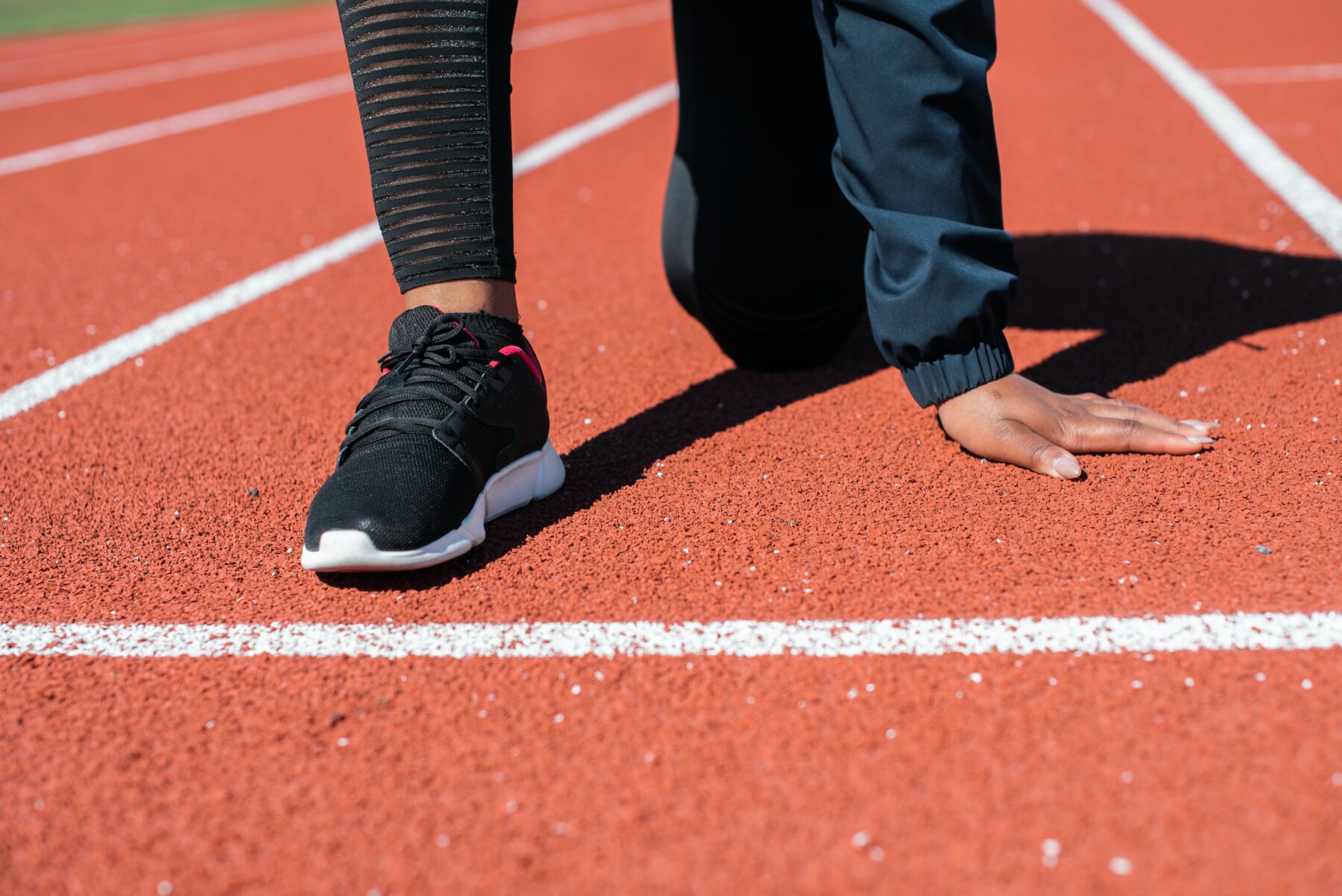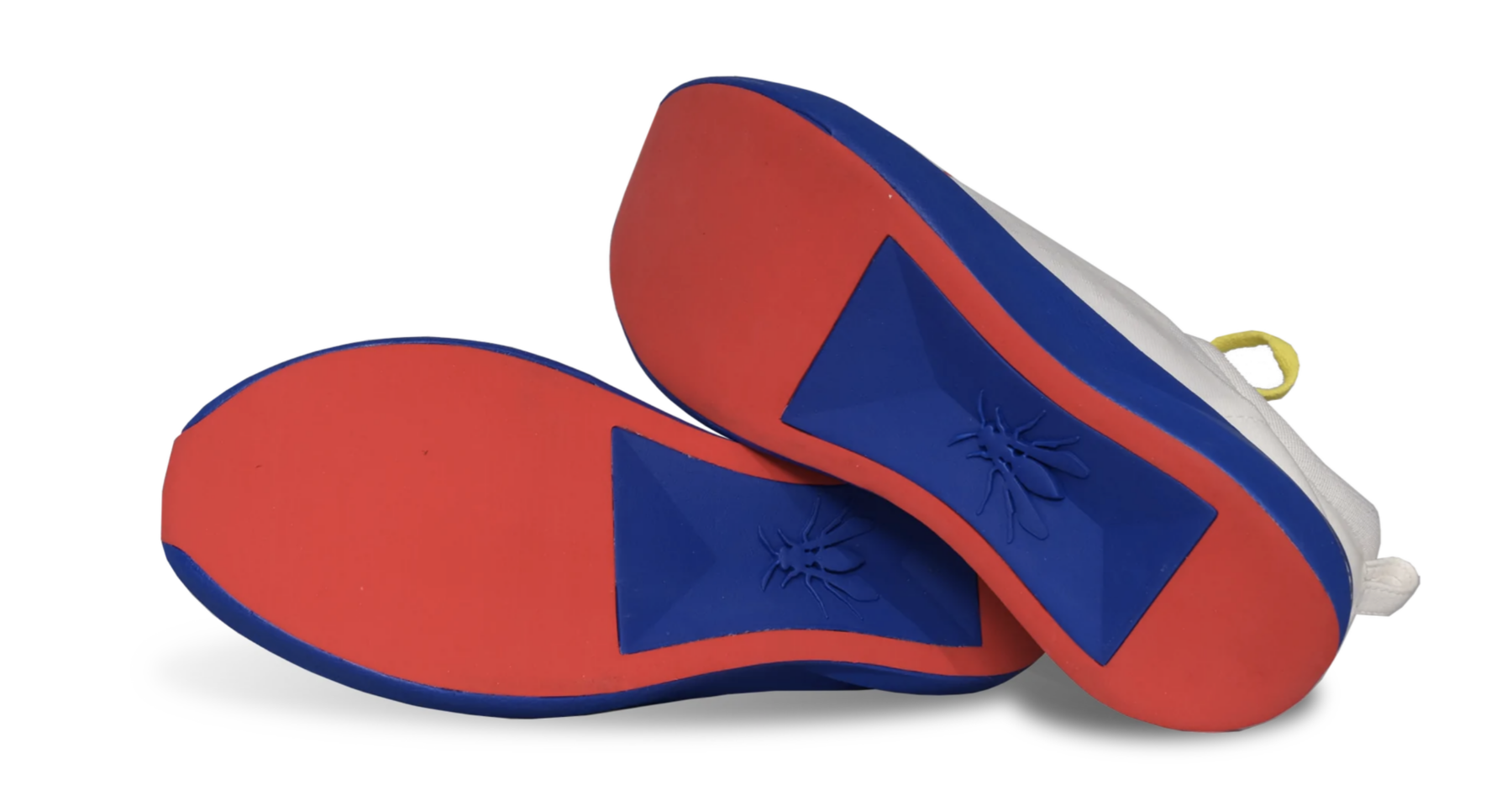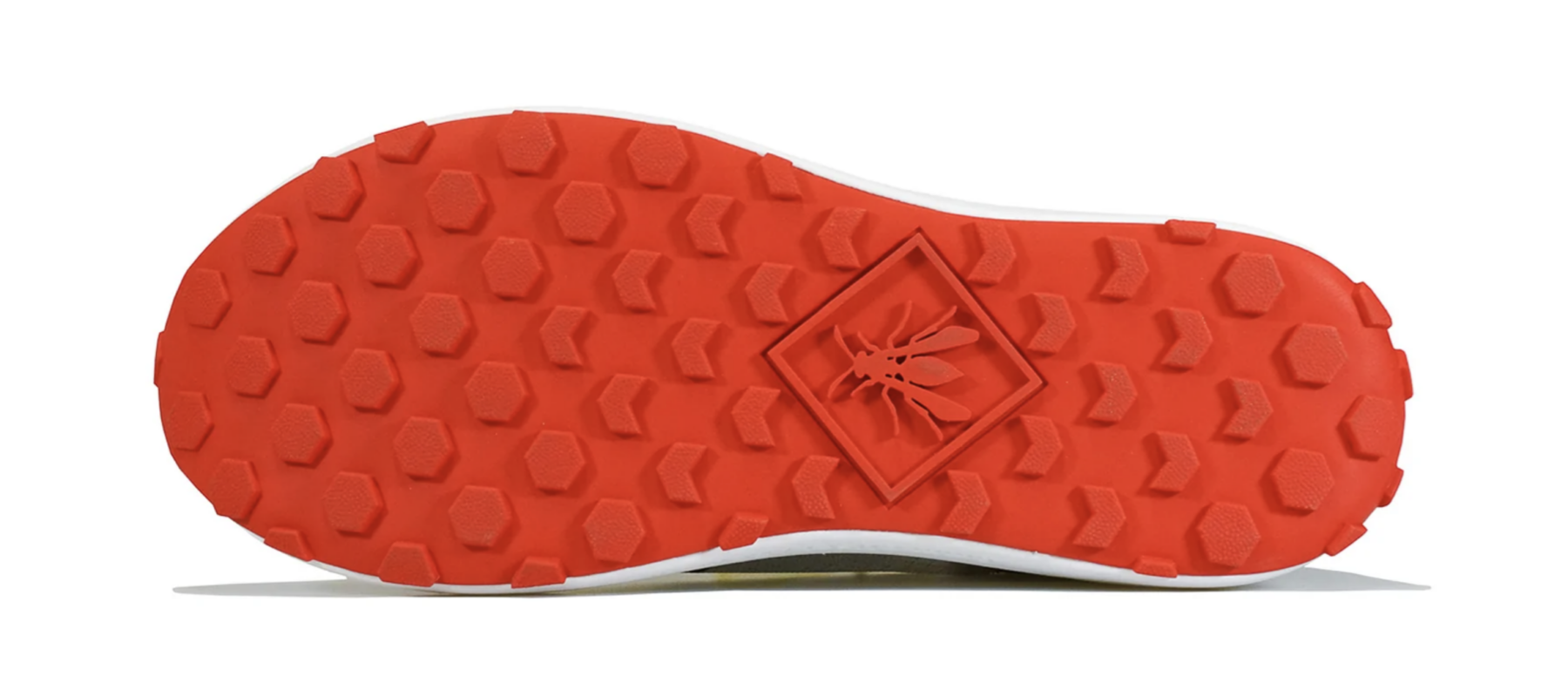Balance of the Outsole: Running Shoe Design Series, Pt. 3

Ironically, for our shoe design series, we kicked off the New Year by talking about the last and moved on to the midsole the following month. This month, we’re jumping into the third part of the series: the outsole.
Essentially, an outsole is a piece of rubber that provides direct contact between the athlete and the road. Rubber can be heavy, so designers are continually finding ways to minimize excess rubber from the design. Though this may create less durability in some cases, a runner will be rewarded with a lighter shoe.

Courtesy of Atreyu Running
While being lighter doesn’t necessarily mean “faster,” it can contribute to enhanced efficiency. Having 180 SPM (strides per minute) is widely considered an optimized running cadence among runners. There are even playlists on Spotify that are dedicated to that particular BPM (beats per minute) so that athletes can stride to the beat of the music. Moving toward a lighter shoe can aid in achieving this outcome. Minimizing the heavy rubber is often a designer’s go-to method when trying to shave a few ounces.
“Ground feel” is also significant for designers to factor into their footwear designs. There are thousands of nerve endings located in the foot. If you consider the foot-to-brain connection, factoring ground feel into a design can become very important. Some designers believe having too much rubber can sever the neurological connection from the foot to the brain, minimizing the body’s natural dynamic reflexes. Others believe having more rubber offers protection from fatigue. Nevertheless, the ultimate goal for a designer is to strike a healthy balance between the intent of their design and the needs of market demands.
Another design parameter in performance running shoes is the durometer of the outsole rubber. The durometer is the measurement of the hardness of a particular material. Runners require various forms of traction depending on the terrain and typically look for rubber to achieve this result. Softer rubbers can contribute to a more grippy experience, and harder rubbers are often more suitable for longevity. It is essential to include a proper rubber compound that matches the intention of a shoe. This can take many rounds of sampling to achieve the desired outcome.

Courtesy of Atreyu Running
Once the thickness and durometer of an outsole compound are determined (to meet the needs of the intent of the footwear), it’s time to include the tread patterns or “lugs.” Tread patterns are where designers can showcase their creativity — inspiration can be drawn from anything, from bicycle tires to Formula One cars. There is always a healthy amount of borrowing from the industry’s design giants to achieve a final product.
To take a philosophical approach to this design element, we can determine that an outsole represents a specific type of balance. There is a delicate balance between ground feel and durability. The outsole represents protection from the elements, but not enough to inhibit the runner’s performance. Undoubtedly, if we could have everything we wanted in a product, it would be durable, lightweight, comfortable and enhance running performance, but it’s essential to consider balancing all aspects of our desires. Sometimes, it is important to realize that we must make tradeoffs in an effort to optimize our outcome.
The outsole is a friendly reminder that choices aren’t always as simple as right or wrong. Sometimes the best option is to strike a delicate balance to achieve the best outcome. When shopping for a new pair of performance shoes, remember that you can enjoy the benefits of each style. Each pair is optimized for something a little bit different than the next shoe on the wall. Enjoy where each pair takes you!
About the Author

Michael Krajicek is the founder, CEO and designer of Atreyu shoes. He participates in marathons and triathlons and leads the Atreyu Run Club in Austin. When not participating in endurance sports or training, Krajicek enjoys photography and playing music.






